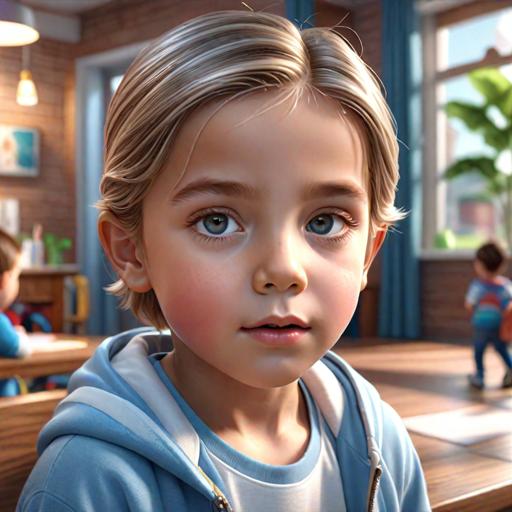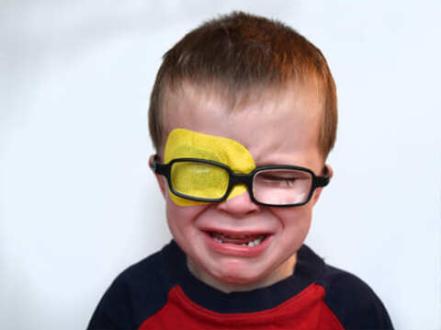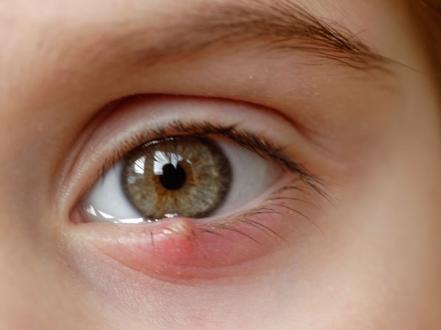In the early years, a child's eyes need special care since they develop so quickly. Early recognition of vision troubles minimizes hazards and improves outcomes of restorative therapy. Parents should know the signs of the most common eye problems in children.
Five prevalent eye conditions in children
1. Lazy eye (amblyopia)
The first issue to be aware of is amblyopia. It is a condition that can cause a decline in visual acuity in youngsters. Reduced visual strain in one eye is a hallmark of lazy eye syndrome, a condition that impacts visual processing in general. Among all demographics, children are most at risk. Amblyopia manifests itself in the following ways:
- A substantial decline in close vision and an aggravating decline in far vision.
- Headaches on a regular basis and great exhaustion.
- Hypersensitivity to light.
- Difficulty telling different tones of colors.
Possible signs include drooping of the upper eyelid lash line or involuntary eye movement.
A visual impairment can range from barely perceptible to totally blinding. Hence, due to the seriousness of the effects, you should not delay treating amblyopia in infants.
2. Refractive errors
Kids with refractive errors have a harder time understanding their environment, have trouble communicating and learning new things, have trouble focusing, have less physical stamina, and are less active overall. If the issue is identified promptly and therapy is initiated, poor consequences can be prevented. Thus, consider these two issues:
Myopia is the most frequently observed issue in minors that necessitates correction. It may result in eye strain or even migraines, as it causes objects that are far away to appear out of focus.
Hyperopia is an issue characterized by the perception of nearby items as being out of focus. Common signs that kids have difficulties seeing close by include squinting, eye irritation, disinterest in academics, and reading difficulties.
3. Chalazion
A chalazion is one of the childhood eye diseases that require attention. It forms in the meibomian gland. It often develops in children, and less often in adults. 2-3 days are enough for inflammation to form. The eyelid turns red, there is local sensitivity of the skin and a local rise in temperature. At the same time, a person can feel good in general.
Chalazion is not an infectious process, so it is not contagious to others. However, with long-term treatment, it can transform into a cyst. In such situations, the help of a surgeon may be needed.
Excessive screen time, causing one to blink less frequently and leading to blocked oil glands is one of the main reasons behind the issue. Additionally, environmental factors can turn innocent outdoor adventures into potential eye irritants that lead to chalazion.
4. Droopy eyelids
The condition known as eyelid ptosis manifests as a gradual or sudden drooping of the top eyelid over the eye. It is common for the muscles that control the upper eyelids to be underdeveloped when ptosis is present at birth. Because of this, they will fall over your child's eye(s). One or both eyes may experience ptosis. Common signs to be aware of are tired eyes and trouble maintaining eye contact.
5. Strabismus
Strabismus is characterized by crossed or misaligned eyes. Amblyopia or irreversible visual loss can result from this condition if it is not addressed.
A child's eyes may turn in any direction, from immediately after birth to all of a sudden around the age of two. Treating it is pivotal.
How can I tell if my child needs an eye exam?
A child cannot always report a problem. Suppose you notice that the child squints while reading or watching cartoons, leans very close to the television screen or a book, or rubs the eyes often. In that case, this is a reason to contact a pediatric ophthalmologist as soon as possible. This expert will conduct a detailed child eye exam and create a plan for vision correction.
What are the treatment options?
Treatment options for eye problems in children vary. There is no need to resort to self-medication. For children's health to improve, only medical professionals should be considered. Here are some healing strategies that can be applied:
Medical specialists recommend patching for lazy eye children first. Shielding the healthier eye, which has no vision difficulties, allows the damaged eye to work harder, strengthening itself. You must follow your specialist's directions to restore vision in the damaged eye and use the patch. These techniques, like patching, aim to improve and restore the weak eye's strength. Lazy eye treatment may require drops, making eyesight improvement difficult without them.
With the right pair of glasses, you can improve your vision. Children who show symptoms of poor or dull vision can benefit from wearing glasses. Customized and adjustable eyeglasses are typically prescribed to children who experience near-sightedness or far-sightedness.
Classical therapy methods, including hot compress, eye medications, or surgical removal are options for children with chalazion. The extent of the disease's progression and the eye's overall health determine the method of choice.
The symptoms determine the treatment options for ptosis. Surgery to tighten the muscle and fix the eyelid is the standard treatment. After your child's operation, the ophthalmologist will take care of any vision issues that may have emerged as a result of the droopy eyelid.
Putting prisms in spectacles can help certain patients with strabismus. In some instances, a person may need to wear glasses with an opaque film over one lens in order to block out the second picture. If you suffer from strabismus, surgery may be able to help.
When should I see an eye doctor for my child's eye problems?
With some conditions, children may not have any complaints and the eye issue is silent without any prominent and alarming signs and symptoms. For parents, controlling and maintaining the eye health of their children is of paramount importance since with timely detection, it would be easier to get rid of the consequences and eliminate all possible risks. A series of tests performed to assess vision help uncover problems with eyesight, detect vision-threatening and dangerous diseases early, and help protect kids’ eye health. Therefore, it is important to follow the scheme from specialists. For example, for babies up to 1 year, a monthly check-up under the supervision of a family doctor is required. As for older children, it is necessary to check vision every year, but this is provided that there are no obvious signs of deterioration.
How can I prevent eye problems in children?
Timely detection is the best prevention. Visit the eye doctor regularly, even if there is no any visible reason for such a visit. Some issues are silent, some are possible to treat on time to restore vision. This is a parent's responsibility to ensure that kids receive timely check-ups and the required level of eyesight care.






